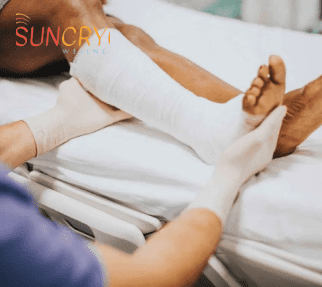After Surgery

When it comes to post-surgery recovery, physical therapy plays a pivotal role in ensuring a patient’s successful rehabilitation. In this comprehensive guide, we will delve into the importance of physical therapy after surgery, shedding light on the numerous benefits it offers and why it is a crucial aspect of the healing process. georgetownsuncryo
Understanding Post-Surgery Recovery
Before we dive into the significance of physical therapy, it’s essential to understand the dynamics of post-surgery recovery. Surgery, no matter how minor or major, can take a toll on the body. The healing process often involves coping with pain, swelling, stiffness, and a limited range of motion. In some cases, surgical procedures may also lead to muscle atrophy.
The Role of Physical Therapy
Physical therapy, in the context of post-surgery recovery, is a specialized form of treatment that focuses on enhancing a patient’s physical well-being. This personalized approach helps individuals regain strength, flexibility, and mobility, ultimately accelerating the recovery process. Here’s why it is so crucial:
1. Pain Management
After surgery, pain management is a primary concern. Physical therapists are experts in providing techniques and exercises that help alleviate pain and discomfort. By tailoring treatment plans to the patient’s specific needs, they ensure a smoother recovery process.
2. Reducing Swelling
Swelling is a common post-surgery issue. Physical therapy includes techniques such as manual lymphatic drainage and therapeutic exercises to reduce swelling, helping patients regain their normal appearance and function more quickly.
3. Restoring Range of Motion
Surgery often leads to a decrease in the range of motion in affected body parts. Physical therapists work on restoring this range, ensuring that patients can resume their regular activities without limitations.
4. Preventing Muscle Atrophy
Muscle atrophy, the loss of muscle mass and strength, can occur after surgery due to immobility. Physical therapy focuses on strengthening muscles, preventing atrophy, and helping patients regain their physical strength.
5. Individualized Treatment
Every patient is unique, and so is their post-surgery recovery process. Physical therapists tailor treatment plans to the specific needs and goals of each patient, ensuring a personalized and effective approach to rehabilitation.

The Benefits of Physical Therapy
The advantages of incorporating physical therapy into your post-surgery recovery plan are numerous and can significantly impact your overall well-being:
1. Speedy Recovery
By addressing pain, swelling, and immobility, physical therapy accelerates the recovery process, allowing patients to return to their normal lives more quickly.
2. Improved Functionality
Physical therapy helps patients regain their full range of motion and muscle strength, enabling them to perform daily activities with ease.
3. Enhanced Quality of Life
With reduced pain and improved functionality, patients can enjoy a higher quality of life during their recovery period and beyond.
4. Minimized Dependency on Pain Medication
The pain management techniques provided by physical therapists can reduce the need for strong pain medication, which often comes with side effects and potential addiction risks.
How to Incorporate Physical Therapy into Your Recovery
To make the most of the benefits physical therapy offers, it’s essential to follow these steps:
1. Consult Your Surgeon
Before starting physical therapy, consult your surgeon to get the green light and recommendations on the best course of action.
2. Find a Qualified Physical Therapist
Seek out a certified physical therapist with experience in post-surgery recovery. They will assess your condition and develop a personalized treatment plan.
3. Stick to Your Treatment Plan
Consistency is key in physical therapy. Attend all sessions, follow your therapist’s guidance, and complete home exercises as prescribed.
4. Communicate
Maintain open communication with your physical therapist. If you experience any issues or have concerns, they can make necessary adjustments to your treatment plan. georgetownsuncryo
In Conclusion
Physical therapy is not just an option but a necessity for anyone undergoing surgery. Its myriad of benefits, from pain management to improved functionality, make it a crucial component of the post-surgery recovery journey. By incorporating physical therapy into your recovery plan, you’re not only ensuring a faster healing process but also a higher quality of life during and after your rehabilitation. https://www.inmotionoc.com
